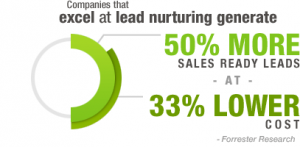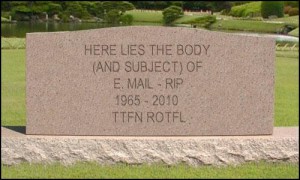What Makes Content King?
 In a previous blog on How to use Lead Nurturing Content to Convert More B2B Customers, I mentioned that content is king when it comes to lead conversion. I only touched on the topic briefly, but decided the subject is worthy of its own post.
In a previous blog on How to use Lead Nurturing Content to Convert More B2B Customers, I mentioned that content is king when it comes to lead conversion. I only touched on the topic briefly, but decided the subject is worthy of its own post.
Content Creates a Connection
Most marketing automation strategists focus on the sheer volume of leads and the speed of automated software when they are promoting their services to new businesses. Although these are beneficial to the success of a marketing automation campaign, they do not actually create a connection between the company and the consumer.
Lead nurturing content is a company chances to build a lasting relationship by communicating directly with the lead. It has to give the reader real value to keep them interested. Unfortunately, even clever and helpful content will still be useless if it is never read. That is why there also needs to be an emphasis on effective content marketing.
Promote Content on Discussion Boards
Content marketing will require strategic networking with other people in your industry. Spend time establishing your online authorship by posting compelling quotes and tidbits from your nurturing content on other forums and discussion boards. Make sure to create clear links back to original blog posting to encourage two-way traffic.
Content Marketing with Social Media
Millions of articles are shared every day on Facebook, LinkedIn, Google+, and Twitter. Marketing automation strategist will create content worthy of being shared and then use a combination of different social media sites to distribute and promote the information online.
The techniques for approaching social media users vary depending on the site. LinkedIn and Google+ are ideal for professional business content while Facebook and Twitter should have a more entertaining or educational aspect to the article.
Understand Your Target Audience
How and where you promote your content will depend on your company’s unique target audience. Start by using website visitor tracking and lead profiling to gather valuable information on your potential leads. Look for similar interests and online behavior that will help you understand their needs and interests. This will allow you to create lead nurturing content that answers their questions and help you promote it in the places they are most likely to look.
Online consumers are aware they have an abundance of choices, which gives them higher expectations. They expect real engagement, free advice, and useful resources. Lead nurturing content is necessary for creating a more meaningful connection with potential leads and content marketing is needed to spread word of your valuable content and attract new visitors. Successfully combining these two marketing strategies will show you exactly why content is the king when it comes to lead conversion.











